Step into a great room and you sense possibility: soaring ceilings, open sightlines, and the challenge of making one expansive volume feel intimate. Recent design trend reports highlight how layered organic lighting, eco-friendly finishes, and smart-home automation are rewriting the rules for these modern gathering spaces. At the same time, designers rely on timeless strategies—artful zoning, conversation-centric layouts, and meaningful personal displays—to anchor the scale and showcase personality. Whether you’re renovating from scratch or refreshing weekend by weekend, the following ideas translate professional insights into doable moves. Let them spark fresh vision the next time you stand beneath that lofty ceiling and wonder, “What now?”
1. Layered Lighting that Lifts Your Great Room
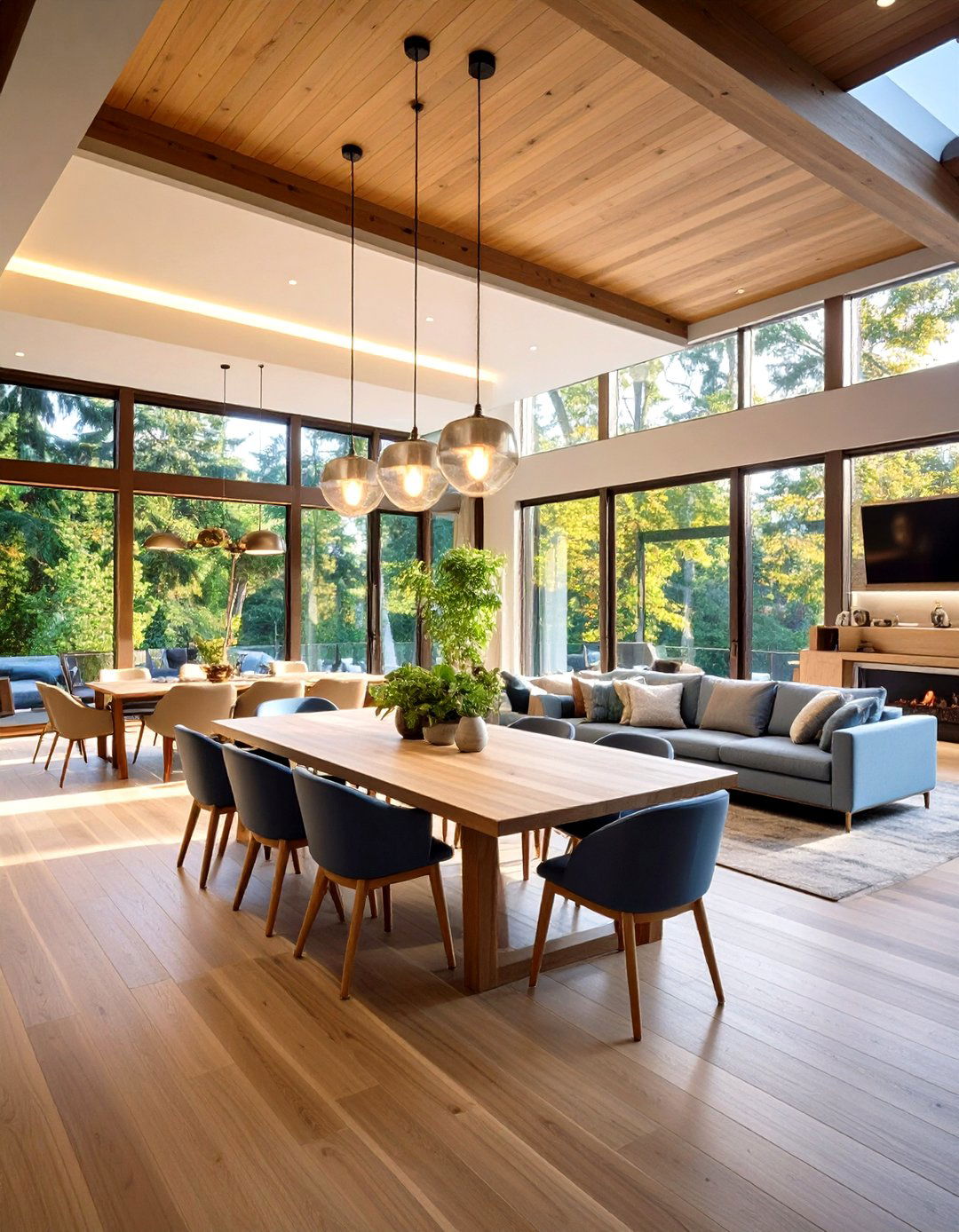
A well-lit great room feels welcoming from sunrise gatherings to late-night movies. Start by layering ambient, task, and accent lighting so every seat enjoys glare-free illumination. Current 2025 lighting trends favor organic fixtures—think raw wood or hand-cast stone pendants—adding texture without visual clutter. Anchor the ceiling with a dimmable chandelier hung roughly 30–36 inches above the tallest occupant’s sight line, then sprinkle recessed cans around the perimeter to reduce shadows. Add wall sconces near artwork and slim profile LED strips inside shelving to create depth. Put each layer on separate smart switches or voice-controlled bulbs so the mood shifts effortlessly from work to relaxation.
2. Defining Great Room Zones with Area Rugs

To break an expansive great room into purposeful nooks, unroll strategically sized area rugs. Designers treat the rug as a visual island that anchors furniture and prevents pieces from “floating” in the void. Choose a rug that is large enough for at least the front legs of every seating piece; this trick instantly groups a conversation cluster. A second, contrasting rug can signal a reading corner or play space, helping family members share the room without competing noise. Keep five to eight inches of flooring visible between rugs for breathing space, and maintain clear walkways of thirty-six inches to preserve comfortable traffic flow.
3. Making a Statement Fireplace the Great Room’s Heart

Unlike smaller living spaces, a great room begs for one commanding focal point, and a sculptural fireplace delivers instant gravitas. Recent hearth designs showcase copper-hued surrounds, marble Art Deco profiles, and textural plaster that doubles as art. Center seating around the firebox at a distance equal to twice its height; this proportional rule keeps conversation intimate yet safe. If you lack a chimney, consider an electric insert clad in stacked stone veneer for realistic ambiance without structural headaches. Flank the mantel with low cabinetry to hide media gear and run wiring before finishes go up. Finally, install a dedicated switch that turns the entire fireplace wall aglow with concealed LED wash lighting for evening drama.
4. Arranging Great Room Furniture for Effortless Conversation
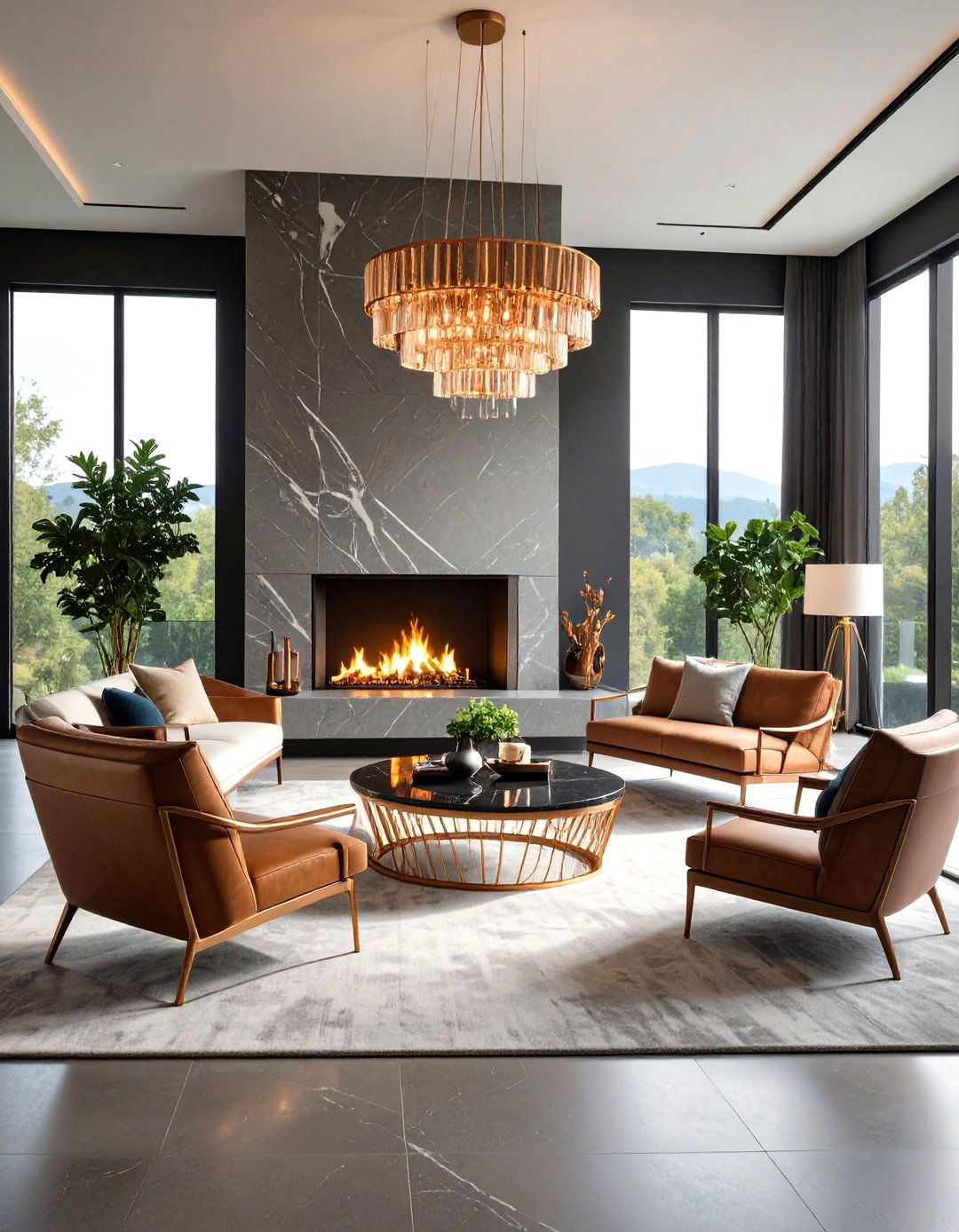
Certainly, scale can overwhelm a great room unless seating is deliberately gathered toward the center. Experts recommend floating the largest sofa off the wall and pairing matching storage or console units opposite for symmetry. Begin with a focal point—fireplace, view, or media wall—then angle armchairs in a loose semicircle so every guest sees one another without craning necks. Maintain at least 90 centimeters between pathways and furniture edges to keep traffic smooth. Instead of one massive coffee table, use nesting tables that can migrate as needed; this modular approach shortens perceived distance and delivers surfaces to every seat. Finish by sliding a low bench behind the sofa so the arrangement feels graceful from kitchen sightlines.
5. Expanding the Great Room with Floor-to-Ceiling Windows
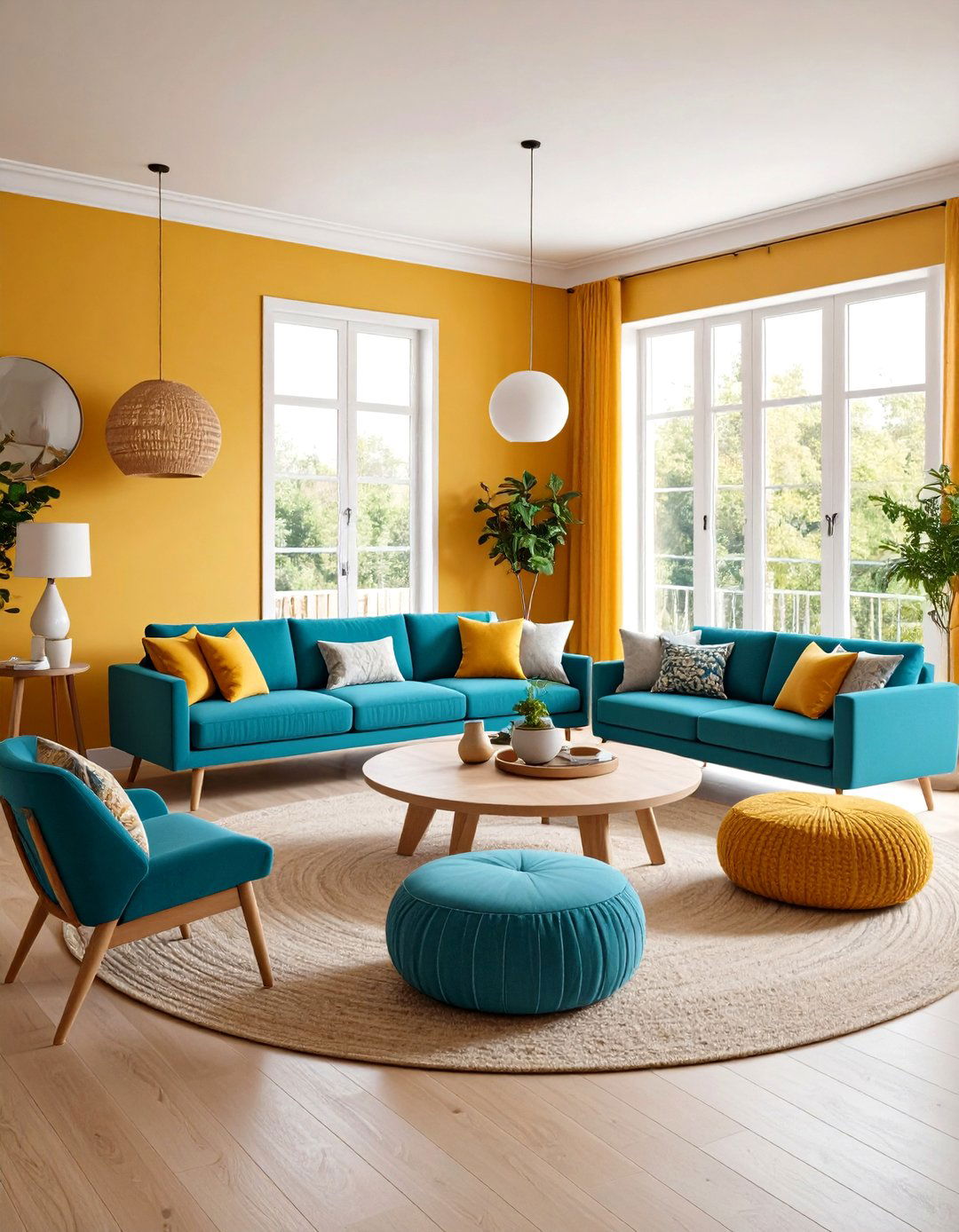
Owing to their generous height, floor-to-ceiling windows make a great room feel boundless and flood it with mood-boosting daylight. Large panes erase the boundary between indoors and landscape, visually borrowing square footage and framing shifting skies like living art. To prevent glare on screens, specify low-e glass with a solar-heat-gain coefficient below 0.30 and add motorized shades set to close automatically at high noon. Where privacy is needed, flank the window wall with tall plants instead of heavy drapery, preserving that coveted sense of openness. If structure permits, align furniture symmetrically so traffic flow follows the glazing’s rhythm, making vistas the star of your great room experience.
6. Grounding the Great Room with a Warm-Neutral Palette
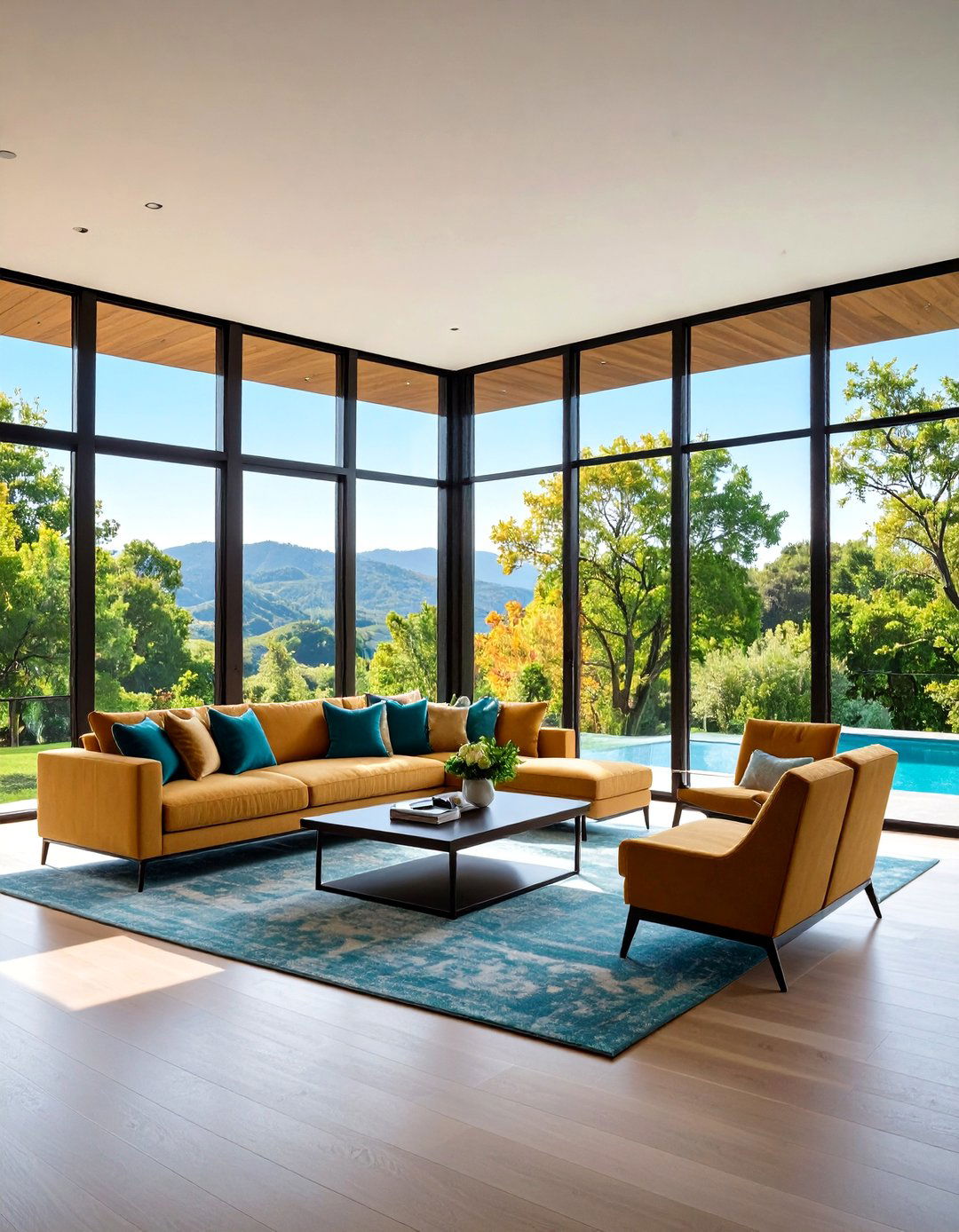
Looking for an easy canvas that lets furnishings shine? Soft clay, oat and mushroom neutrals dominate 2025 color forecasts for great rooms, replacing cooler grays with earth-hugging calm. These hues reflect daylight gently, making ceilings appear higher and wood tones richer. Paint the walls and trim the same subtle shade to blur edges, then layer tonal upholstery for depth. Add one saturated accent—rust pillow, indigo vase, or forest-green throw—to spark energy without crowding the senses. Because warm neutrals contain traces of brown, they pair seamlessly with both brass fixtures and black hardware, giving you flexibility as tastes evolve over time.
7. Concealing Clutter with Smart Great Room Storage
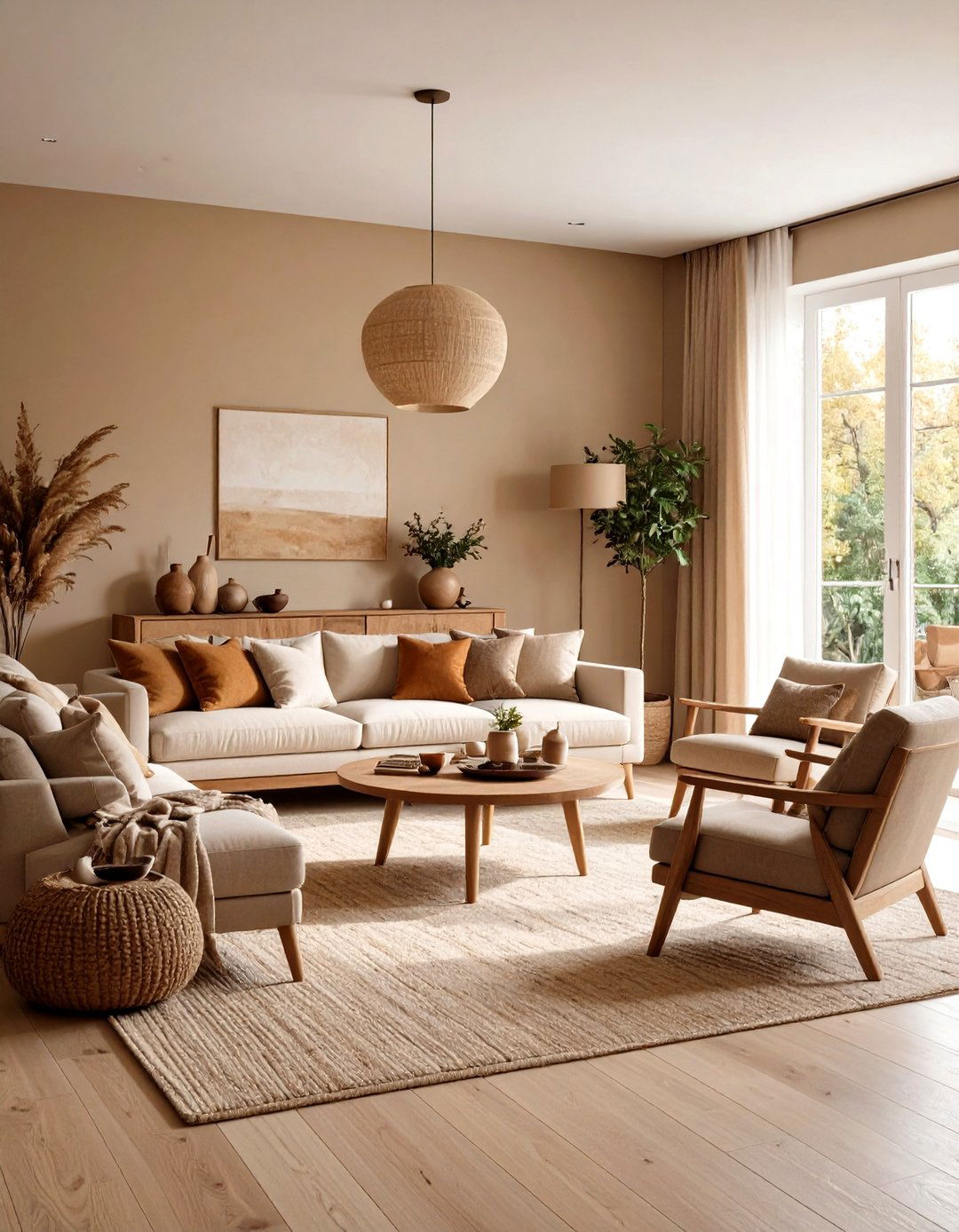
Another hallmark of a hardworking great room is hidden storage that keeps hobby gear, toys, and tech out of sight. Built-in cabinets flanking the TV or fireplace swallow board games and gaming consoles, while deep drawers beneath window seats corral blankets for sudden movie nights. Opt for touch-latch fronts so expansive elevations read as sleek paneling rather than cupboards. In open shelving, keep no more than two-thirds of cubbies filled; visual breathing room doubles as décor. Remember to leave a dedicated charging drawer near seating so devices tuck away while powering up, eliminating cord snakes across premium floor space. Label each zone on the inside door so family members know where every item returns.
8. Bringing Nature into the Great Room with Biophilic Touches

Surprisingly, a splash of greenery can soften the tallest great room ceilings and revive tired spirits. Biophilic principles encourage introducing living plants, natural textures, and even gentle water sounds to mimic outdoor environments. Cluster a fiddle-leaf fig by the brightest window, then trail pothos along open shelves to draw the eye upward. Consider a reclaimed-wood coffee table whose knotty grain echoes nearby garden views, and swap plastic planters for clay to keep the material palette honest. If maintenance worries you, install a moss art panel that needs only occasional misting yet still boosts acoustic absorption. The result—a great room that literally breathes.
9. Dramatic Ceiling Treatments to Crown the Great Room
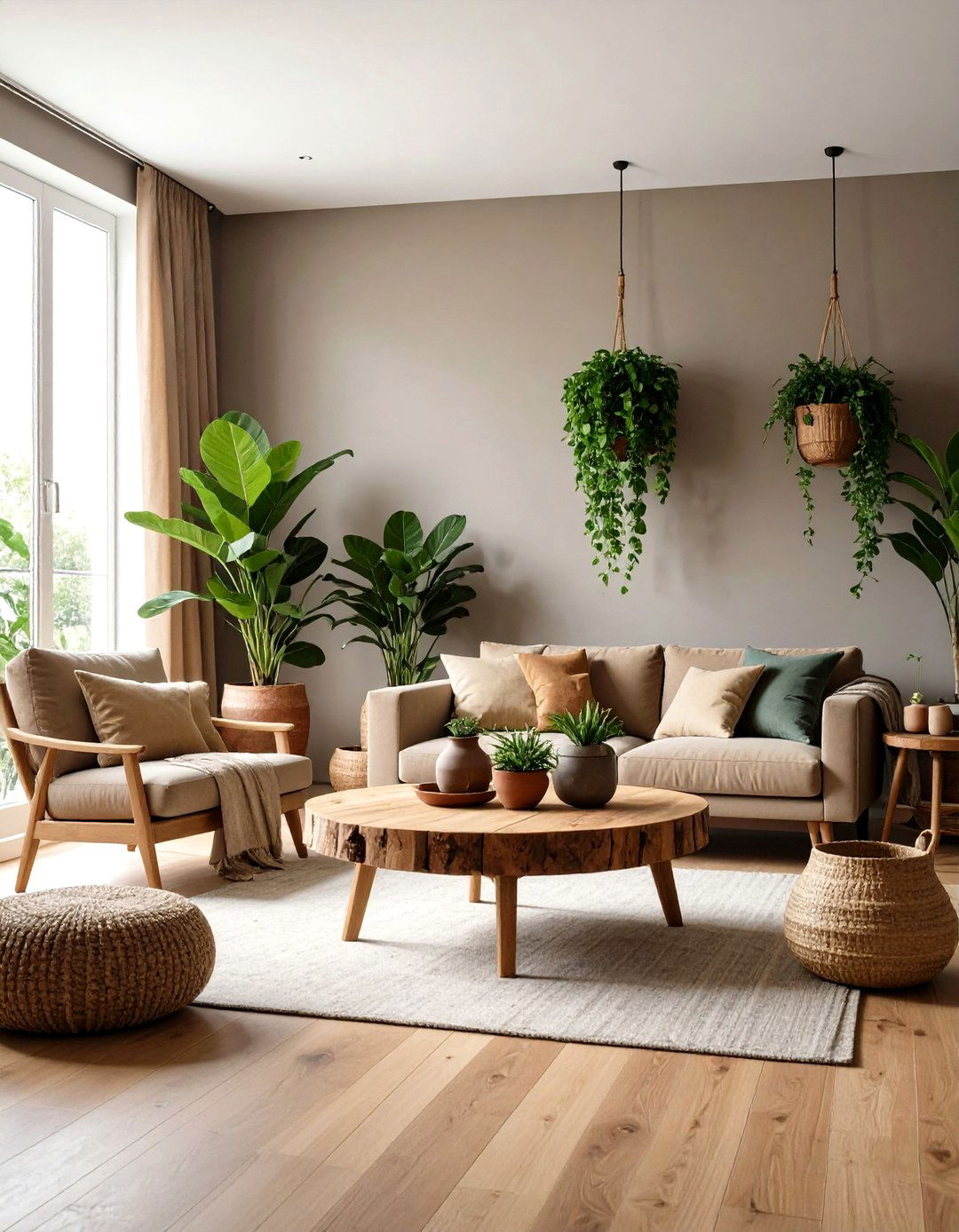
Unlike standard eight-foot spaces, a great room often has volume begging for architectural emphasis overhead. Exposed beams, coffered grids, or shiplap in contrasting stains create rhythmic shadows that pull eyes skyward, making the room feel even grander. When retrofitting an existing ceiling, lightweight faux beams can be screwed into blocking and stained to match flooring for cohesion. If your plan includes a vaulted silhouette, center a chandelier along the ridge so wire paths hide inside hollows. Painting the ceiling two shades darker than walls adds cozy intimacy without lowering perceived height, a trick especially welcome during winter evenings for relaxation.
10. Curating Gallery-Style Art for a Great Room Wall
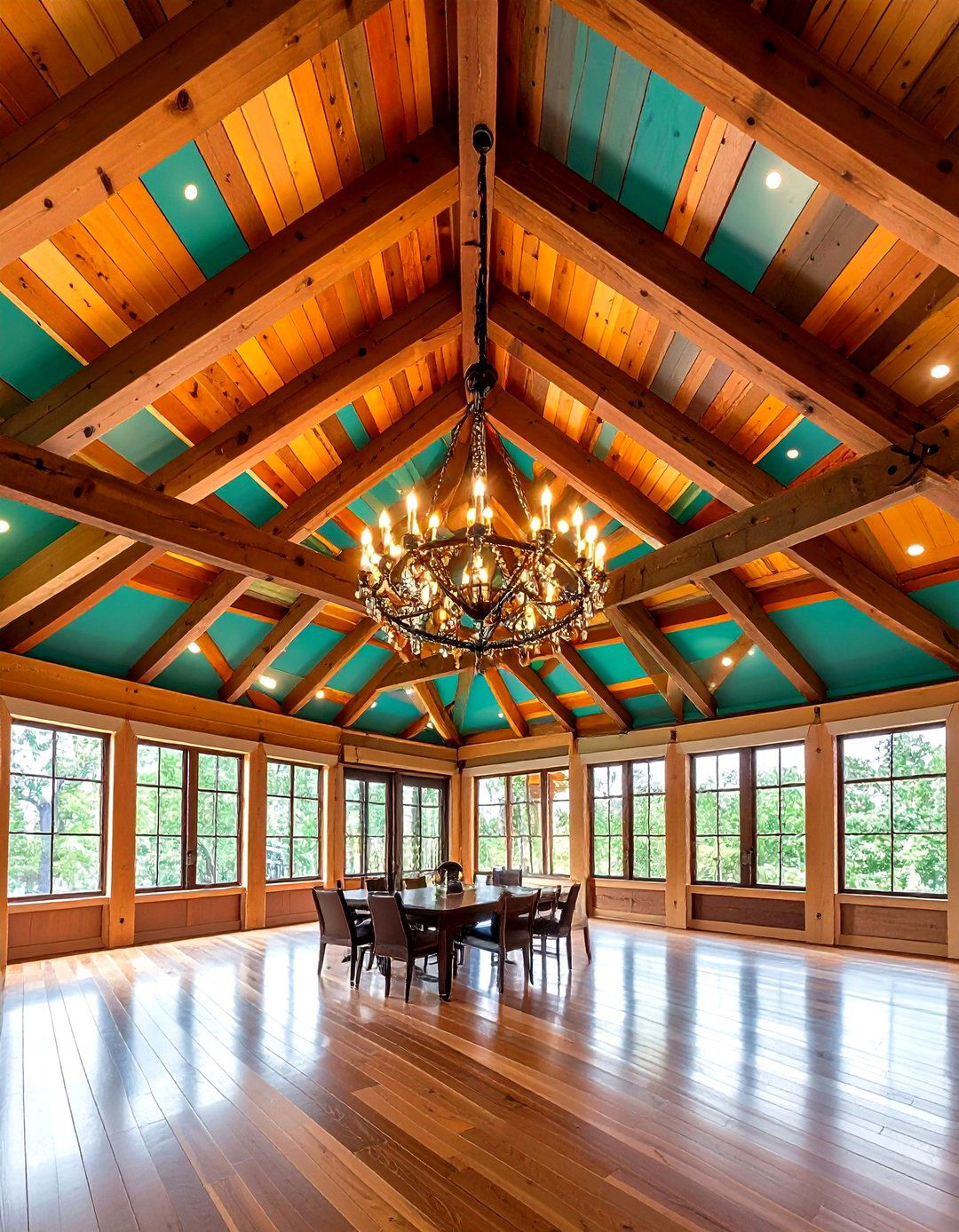
With ceilings soaring and walls stretching uninterrupted, a great room can drown smaller images. To avoid the postage-stamp effect, plan a gallery wall that fills at least two-thirds of the vertical space, using varied frame sizes grouped by color story for cohesion. Lay the arrangement on the floor first, snapping a photo for reference before committing nails. Hang the midpoint of the composition at average eye level—about 150 centimeters—so seated guests engage comfortably. If you prefer large-scale singular art, pick a canvas at least one-half the width of the sofa and light it with adjustable picture spots tied into your layered circuit.
11. Seamless Smart-Tech Integration for the Great Room
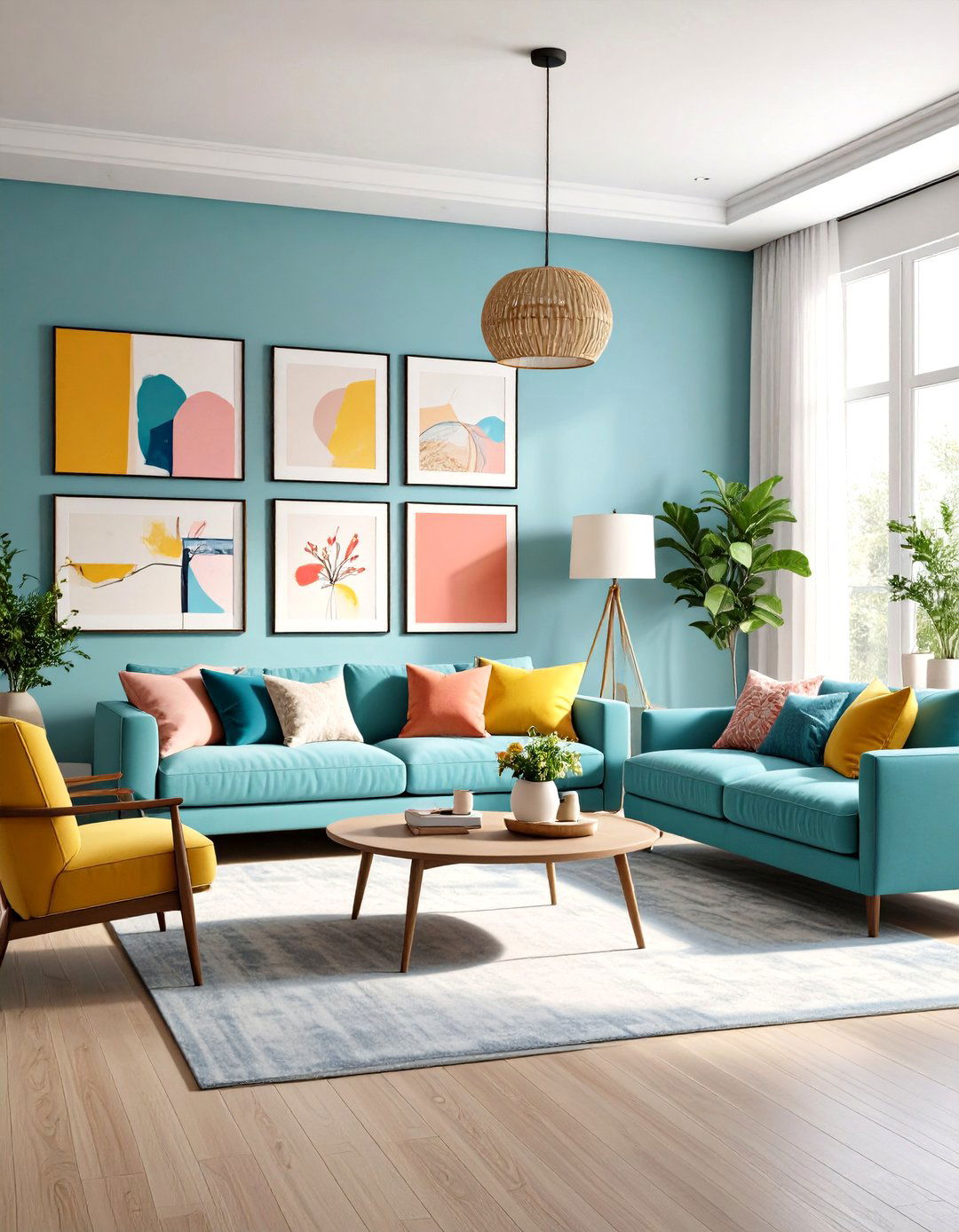
As homes become more connected, great rooms now double as digital command centers—yet gadgets need not dominate the décor. Wi-Fi-enabled hubs allow voice control of lighting, thermostats, and roller shades, keeping remotes off the coffee table. Conceal a short-throw projector in the ceiling so movie nights appear only when summoned, and run fiber-optic HDMI cables inside conduit before closing drywall. Choose floor outlets with pop-up USB ports for flexible furniture placement, and label circuits so one voice command powers down the entire room at bedtime. Remember to secure devices behind a robust password and schedule firmware updates just like smoke-detector tests.
12. Mixing Seating Heights for a Cozy yet Grand Great Room

Consider the sensory experience: a towering sofa and tiny ottoman can make guests feel mismatched. Instead, blend seating heights—low poufs for kids, mid-back swivel chairs for conversation, and a lofty sofa for lounging—to create inclusivity within the great room. Rotating chairs inward encourages face-to-face connection even in sprawling footprints. Layer throw pillows of varying shapes to echo the stepped silhouettes, and add a plush area rug to soften footfall. For evening gatherings, tuck a couple of ottomans under a console; they slide out when extra spots are needed yet keep floors clear day to day. Balance the arrangement by ensuring every seat has access to a side table for drinks and books.
13. Choosing Sustainable Materials for an Eco-Friendly Great Room
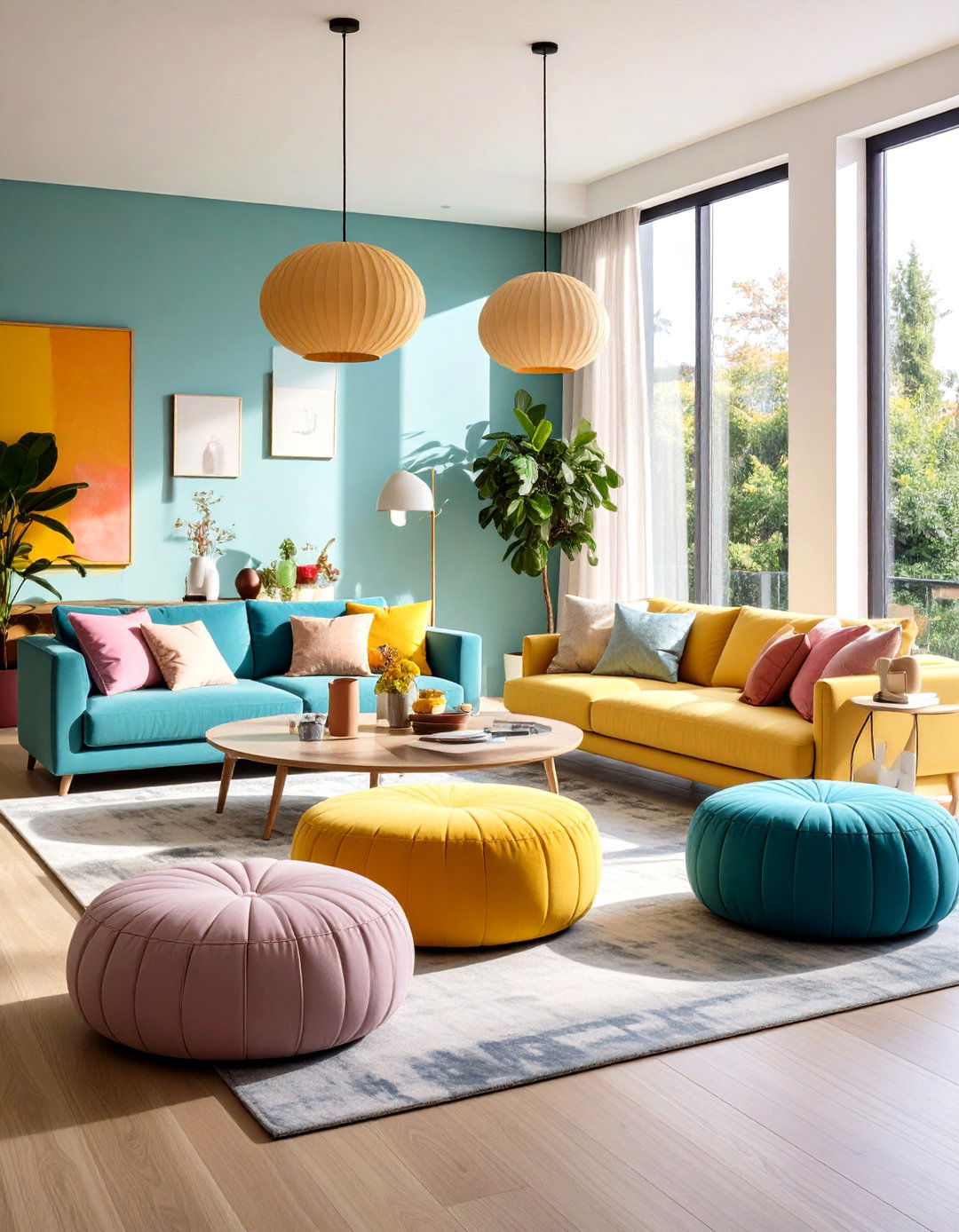
By making mindful material choices, you can slash the environmental footprint of a new great room without sacrificing style. Rapid-renewable bamboo floors, resilient cork underlayment, and recycled-metal accent tables headline 2025’s eco-friendly palette. Pair these with low-VOC paints to keep indoor air quality healthy, and favor fabrics certified free of harmful chemicals. When shopping for a sofa, look for kiln-dried sustainably harvested hardwood frames and natural latex cushions that won’t off-gas. Even small swaps—like reclaimed-glass light pendants—chip away at landfill waste while adding one-of-a-kind character. The payoff is a great room that invites conversation about both comfort and conscience today.
14. Adding Textured Accent Walls to Energize the Great Room

Despite the popularity of open-concept layouts, a single textured accent wall can anchor a sprawling great room. Think of shiplap planks installed vertically for fresh loft height, or limewash paint that delivers hand-brushed dimension under shifting daylight. Exposed brick veneer introduces heritage warmth and pairs effortlessly with both vintage and contemporary furnishings, keeping the scheme timeless. Limit bold applications to one surface so the eye rests elsewhere, and echo the hue in smaller accessories for balance. For renters, peel-and-stick wood panels provide reversible character without drywall damage, giving the room personality today and flexibility tomorrow. Seal the finish with a matte topcoat to prevent distracting glare at night.
15. Optimizing Great Room Traffic Flow

In an open-plan house the great room is a thoroughfare, so clear pathways are non-negotiable. Interior planners advise maintaining at least 90 centimeters between seating clusters and architectural pinch points to prevent shoulder bumps. Sketch traffic lines on paper first, then float furniture to create intuitive routes from entryway to kitchen rather than forcing detours. Whenever you rearrange, test the layout by walking it with a tray of drinks; if nothing sloshes, circulation is probably right. Finish by placing a slim console behind the sofa to subtly divide zones while still letting conversation flow over its top and allow pets to weave comfortably too.
16. Taming Great Room Echoes with Stylish Acoustic Solutions
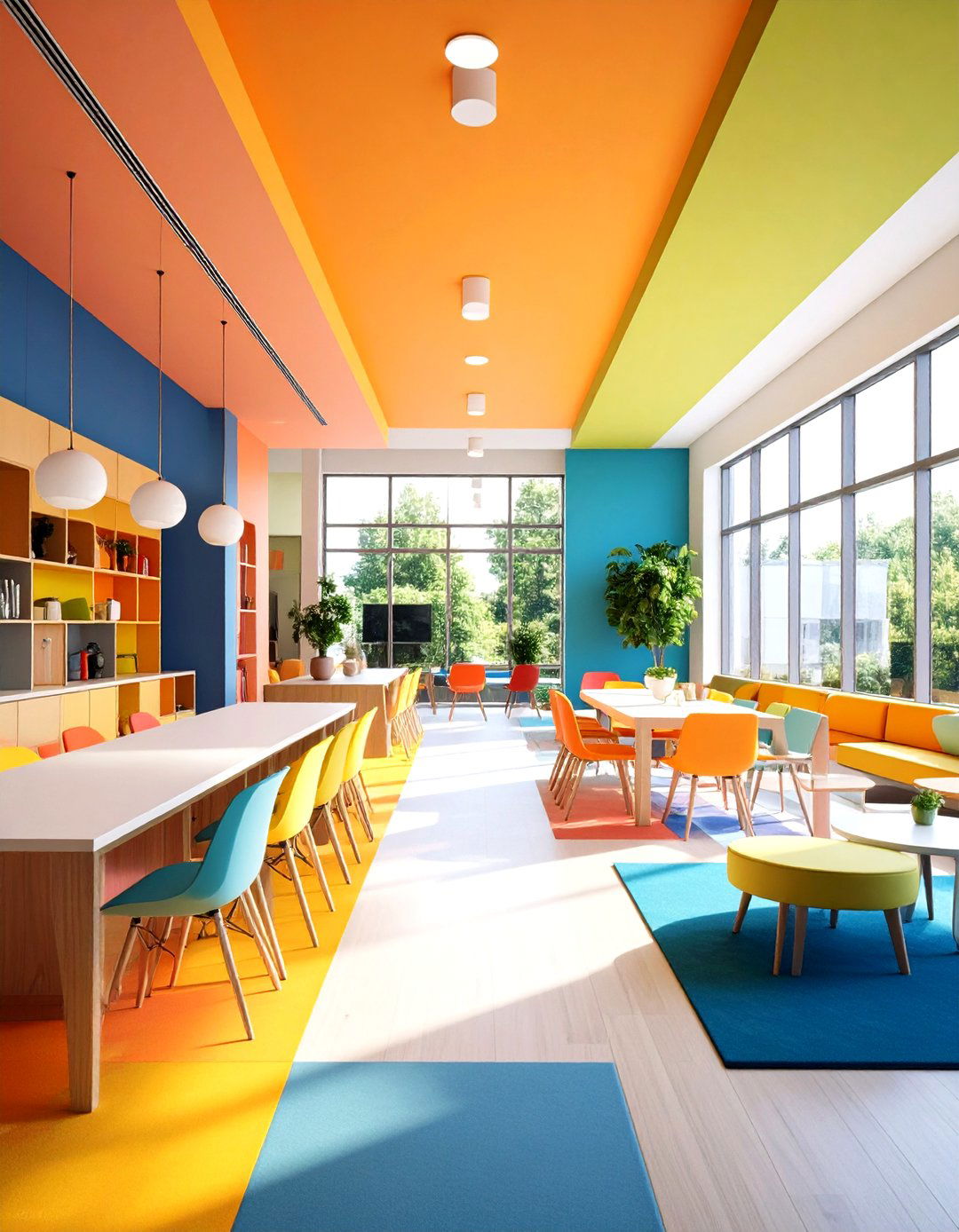
As laughter rises against hard floors and soaring ceilings, echoes can quickly turn a great room into a cavern. Sound-absorbing rugs, textured drapery, and upholstered panels reduce reverberation without sacrificing aesthetics. For targeted control, mount fabric-wrapped acoustic tiles behind the sofa at ear height; they double as art when arranged in geometric patterns. A bookshelf wall packed two-books-deep further muffles noise, and indoor plants add soft diffusion while boosting air quality. Before purchasing panels, calculate the ideal absorption coefficient—aim for 0.45 or higher in multipurpose zones—so family movie night dialogue stays crisp even during storms. Integrating a thick acoustic underlay beneath timber flooring can add another invisible layer of hush.
17. Blending Vintage and Modern Pieces for a Timeless Great Room
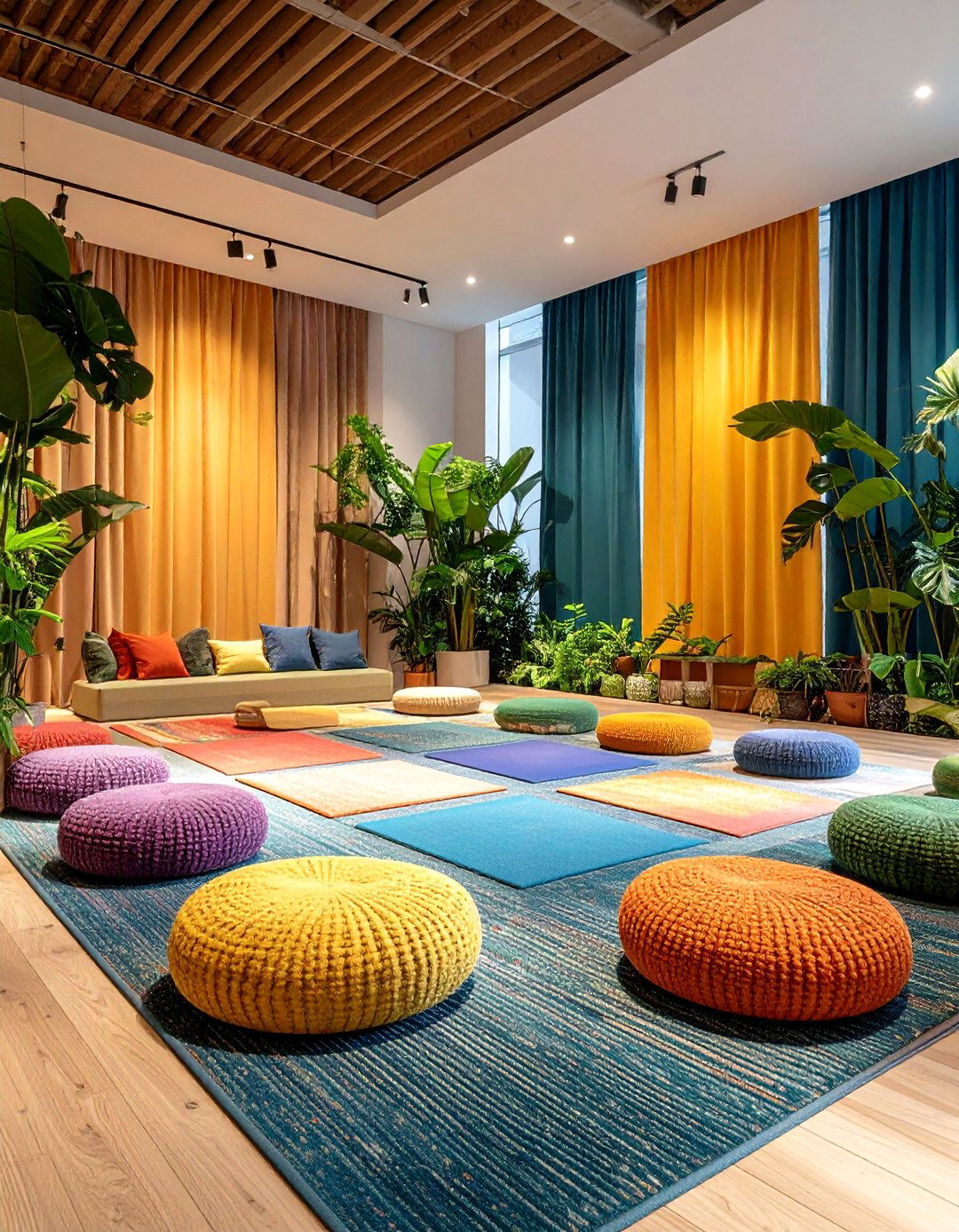
Unlike strict period interiors, a great room thrives on contrast—sleek silhouettes beside storied finds tell richer stories. Designers increasingly combine mid-century chairs with contemporary sofas to honor history while meeting present-day comfort needs. Limit the palette to three main colors so disparate pieces feel related, and echo the warm wood of a 1960s credenza in modern picture frames for subconscious harmony. Balance patina by introducing one tactile element—such as a weathered leather trunk—that can take daily knocks. Finish with new LED dimmers, proving that yesterday’s craftsmanship and today’s technology coexist beautifully in the same great room without sacrificing cohesive style.
18. Refreshing the Great Room on a Budget
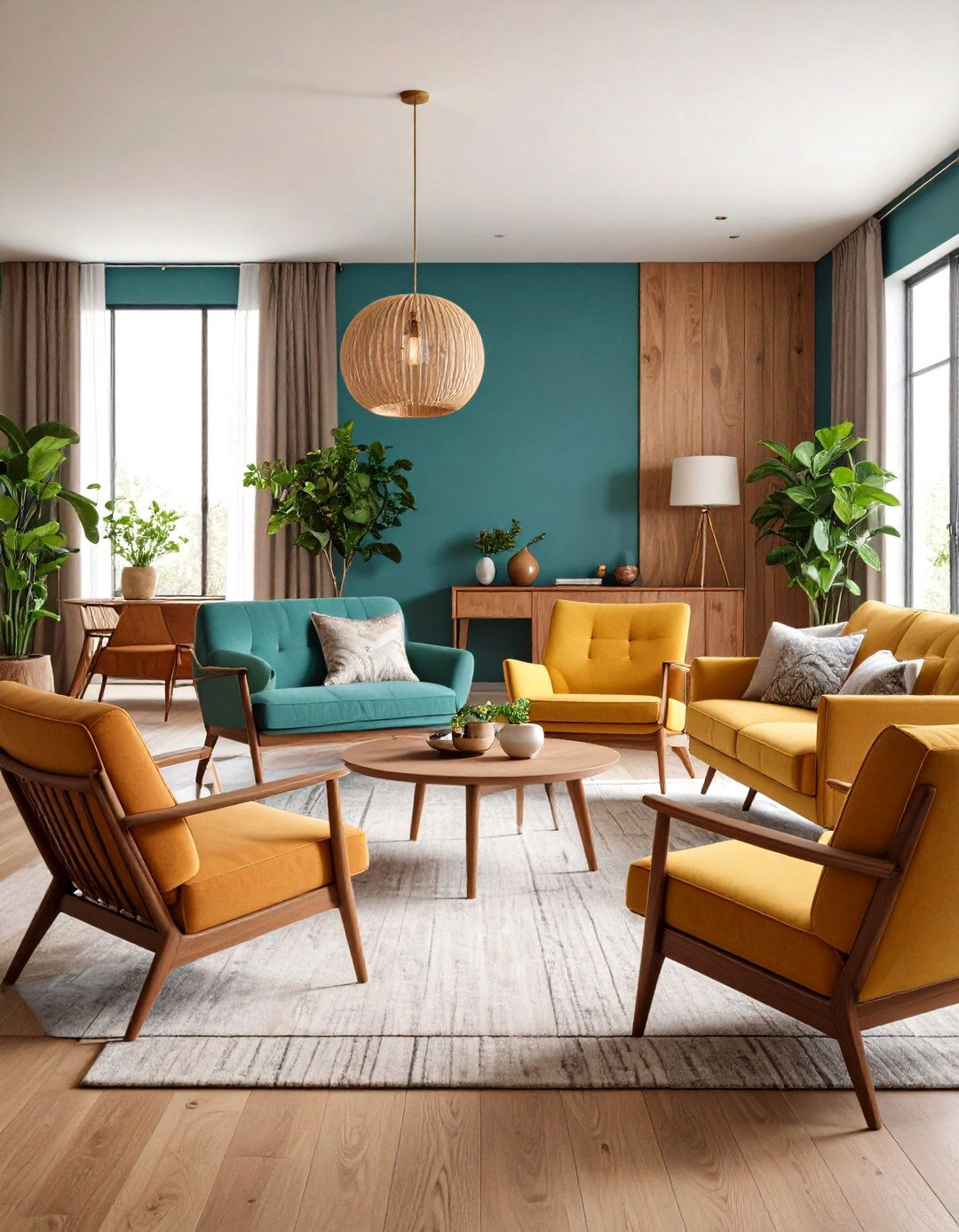
Take heart if your great room needs a makeover but your wallet disagrees—thrifted treasures and strategic swaps can deliver big impact. Weekend scouting at second-hand stores often yields solid wood side tables or statement mirrors for a fraction of retail prices. Give tired furniture new life with washable slipcovers, and spray-paint dated lamp bases in matte black for instant modernity. Online marketplace alerts help you snag deals on gently used rugs; aim for natural fibers that you can professionally clean. Document the room before shopping so dimensions stay top-of-mind and impulse buys stay in the aisle, keeping budget and great room balanced.
19. Showcasing Personal Collections in the Great Room

What sets a magazine picture apart from a lived-in great room is personality, and curated collections supply it in spades. Whether you treasure globes, ceramic bowls, or vintage cameras, group items by theme and vary heights for momentum instead of scattering them randomly. Use floating shelves or narrow picture ledges so objects hover lightly against the wall, and leave negative space around each cluster to avoid visual overload. Remember the rule of odd numbers—threes and fives feel most balanced. Lighting each shelf with a hidden LED strip adds museum-worthy sparkle while still letting the great room remain functional for everyday life.
20. Refreshing the Great Room with Seasonal Layers
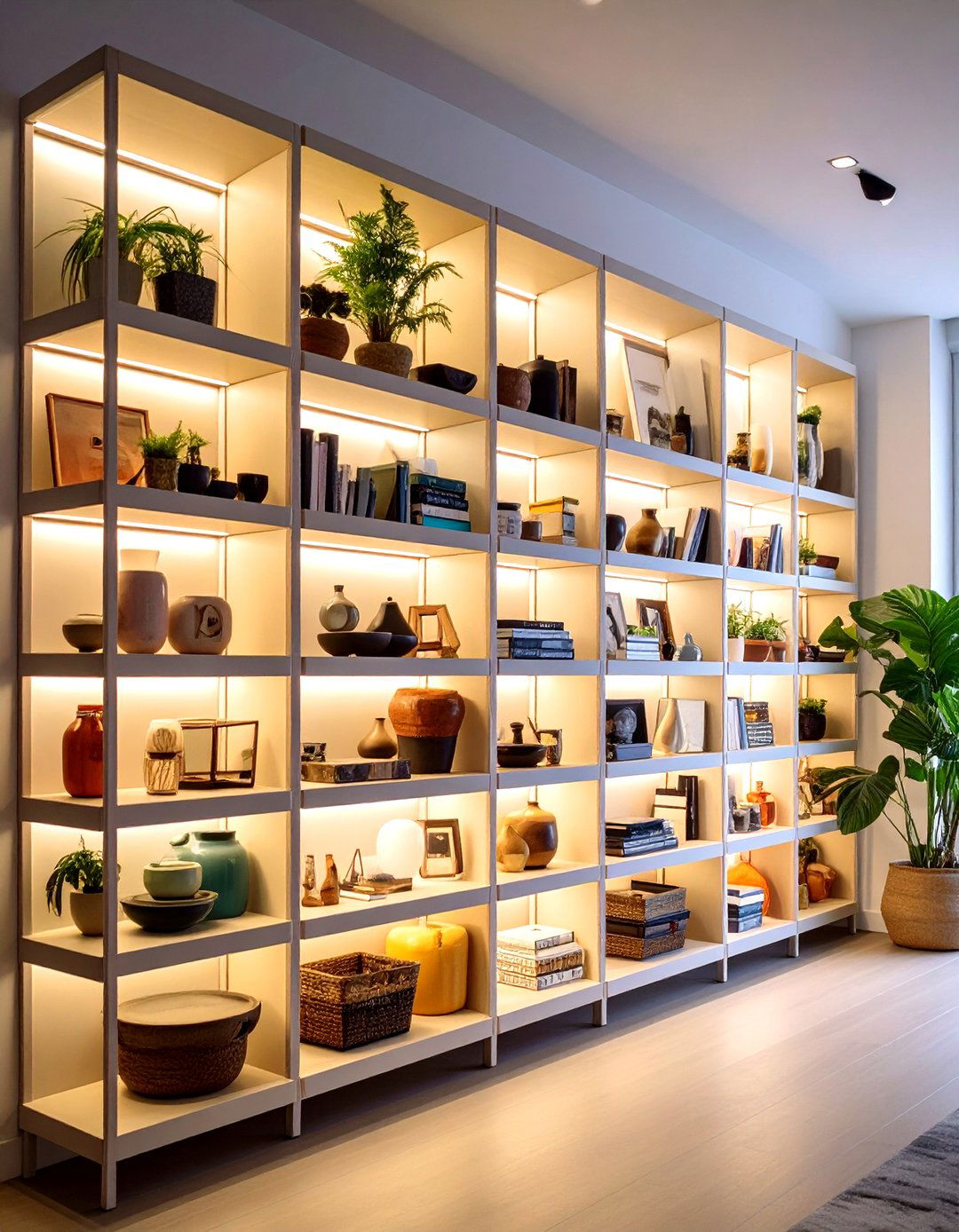
Finally, keep your great room feeling current by rotating small accents as the calendar turns. Swapping emerald-green pillows and faux-fur throws for airy linen covers and rattan trays instantly ushers in spring without repainting walls. As a rule of thumb, transition décor a couple of weeks before weather officially shifts so your home greets the season rather than plays catch-up. Store off-season items in labeled under-sofa bins for quick retrieval. A vase of foraged branches, bowl of pinecones, or stack of beach-read novels is all it takes to signal change; the architecture stays constant while mood evolves for every resident.
Conclusion:
These twenty strategies prove that a great room’s scale is an invitation, not an obstacle. From sustainable bamboo floors to voice-controlled lighting and thrift-store treasures, each idea layers function, comfort, and self-expression until the space feels unmistakably yours. Experiment in small doses, measure before you move, and trust your eye to balance cozy moments against architectural drama. With thoughtful planning, the great room can become the heartbeat of the home—flexible enough for solo reading, robust enough for holiday crowds, and stylish enough to impress long after the paint dries.


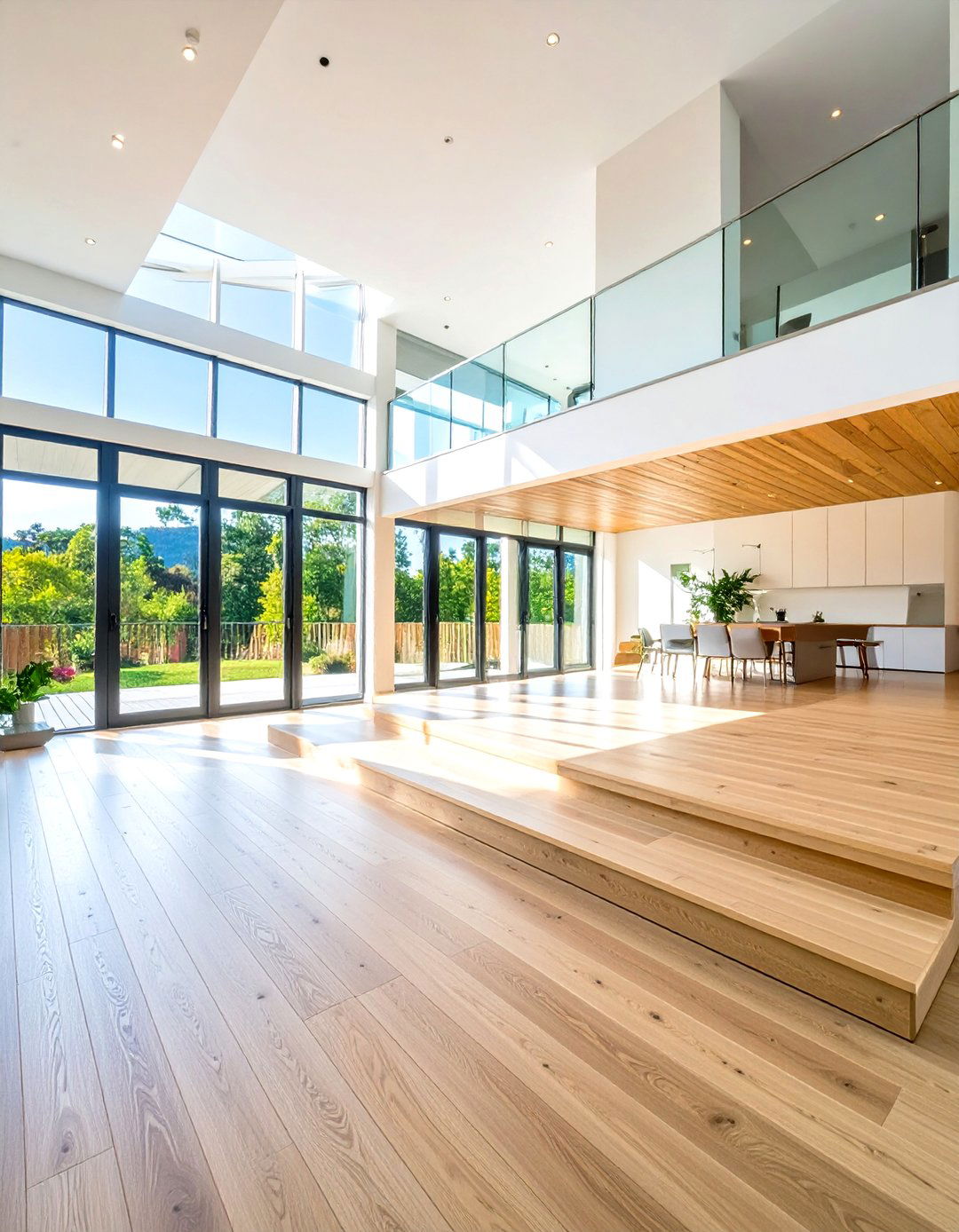
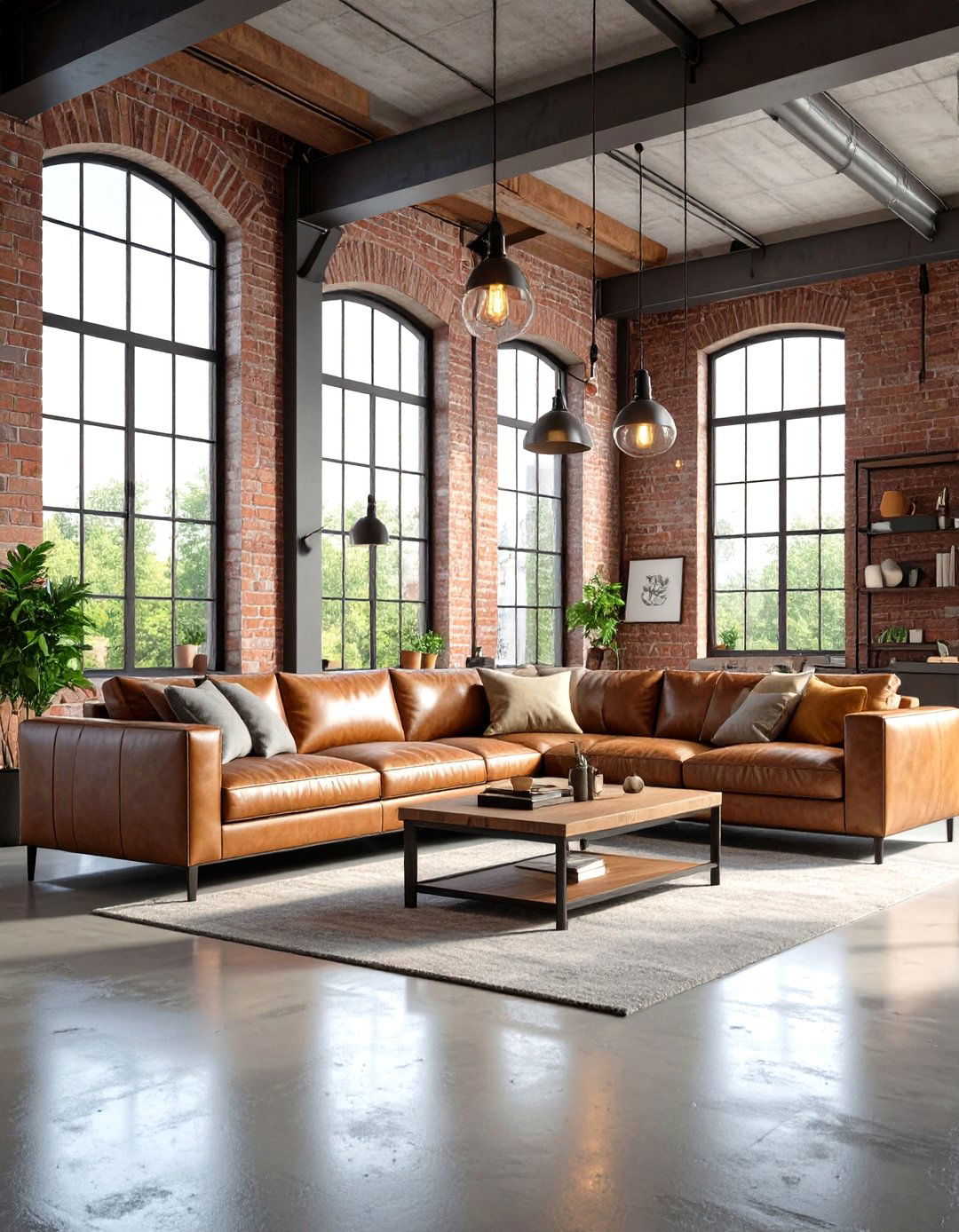

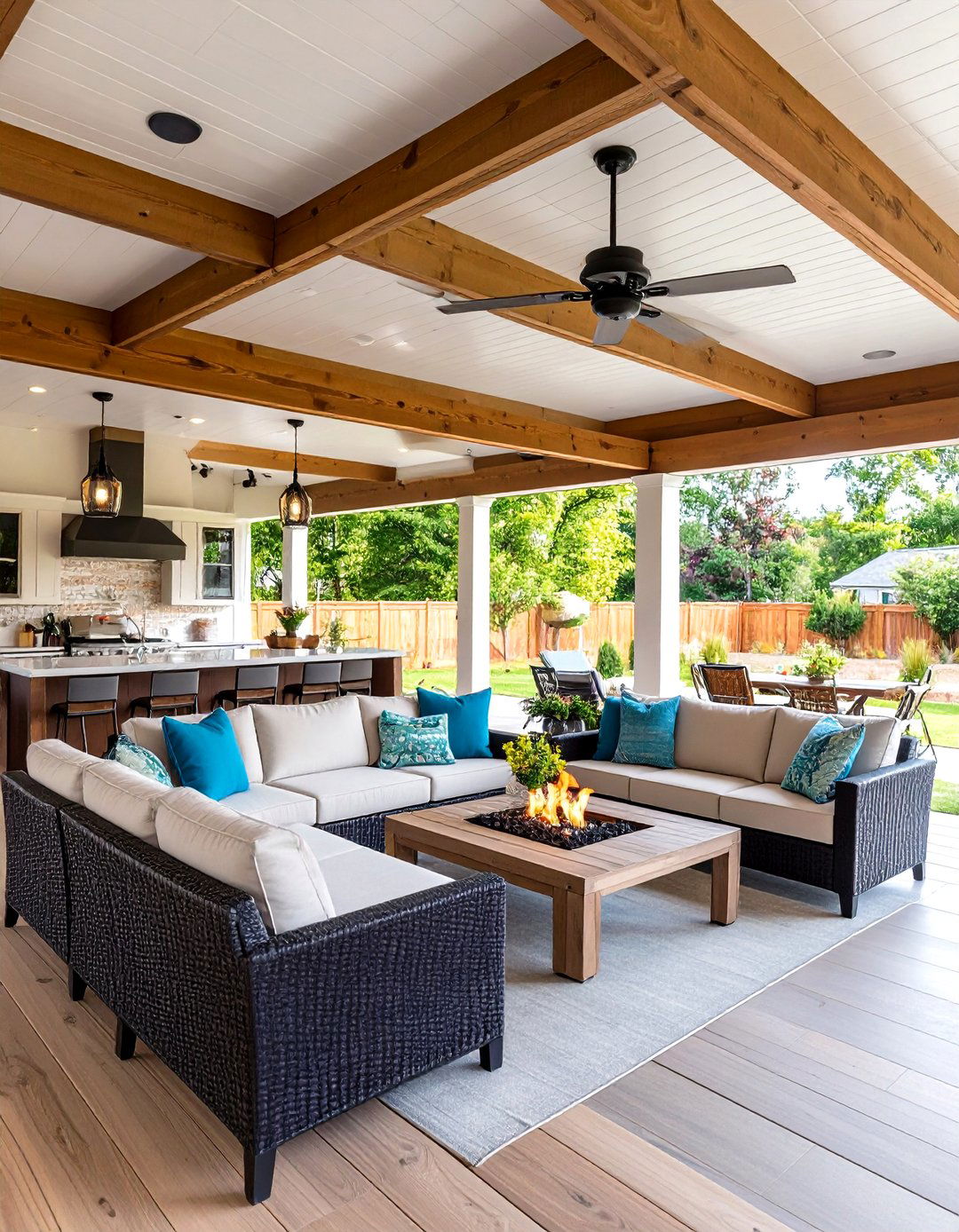
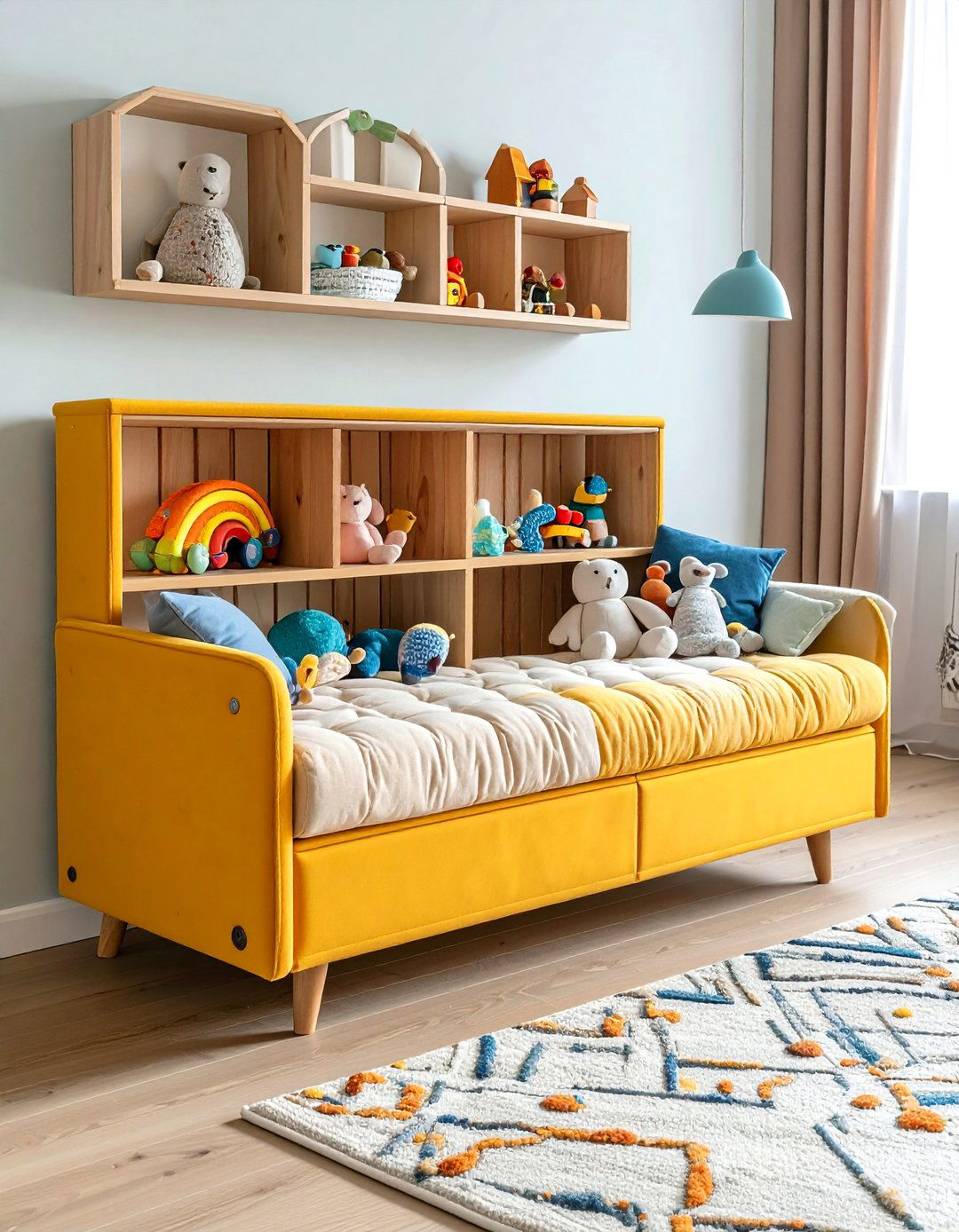
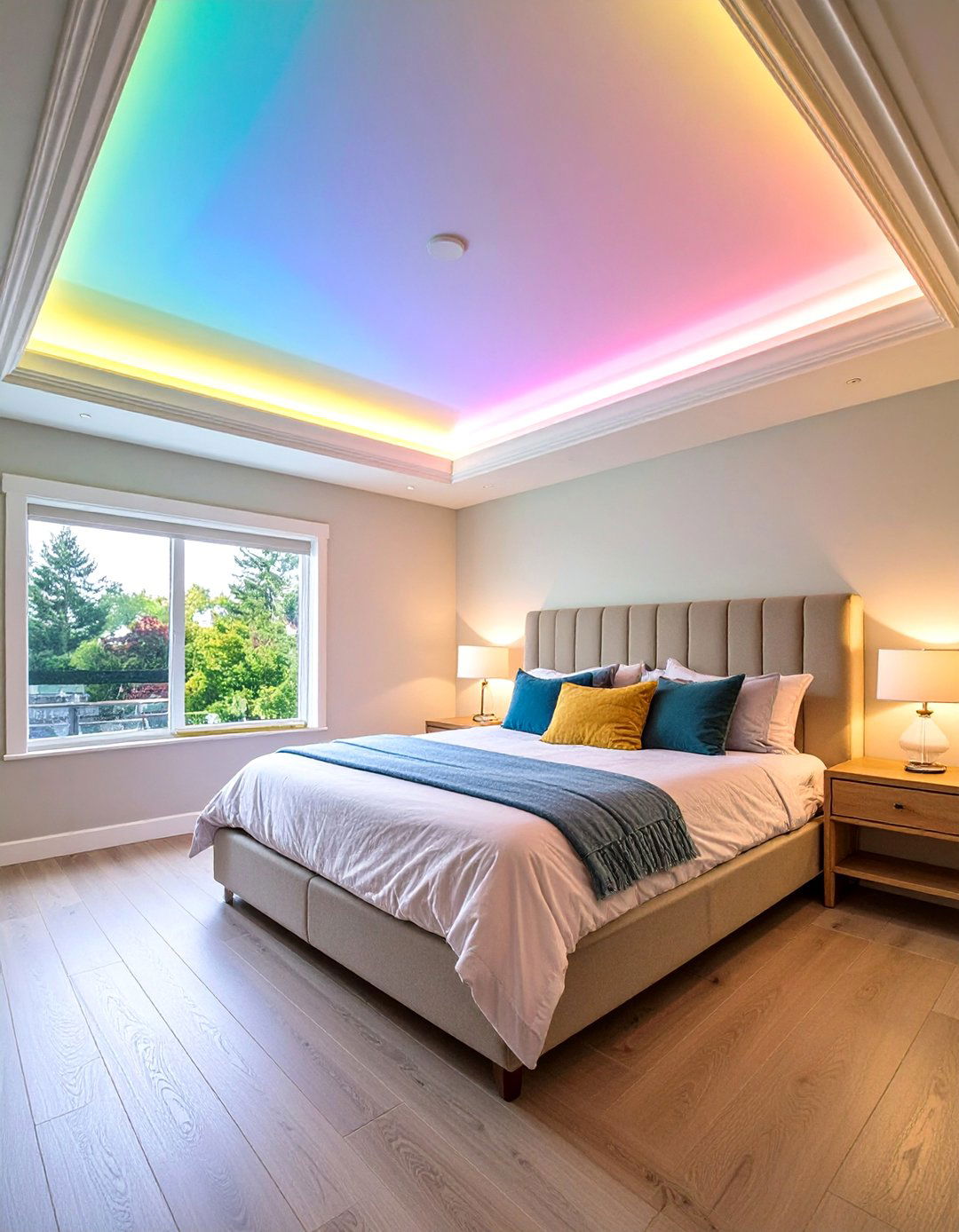
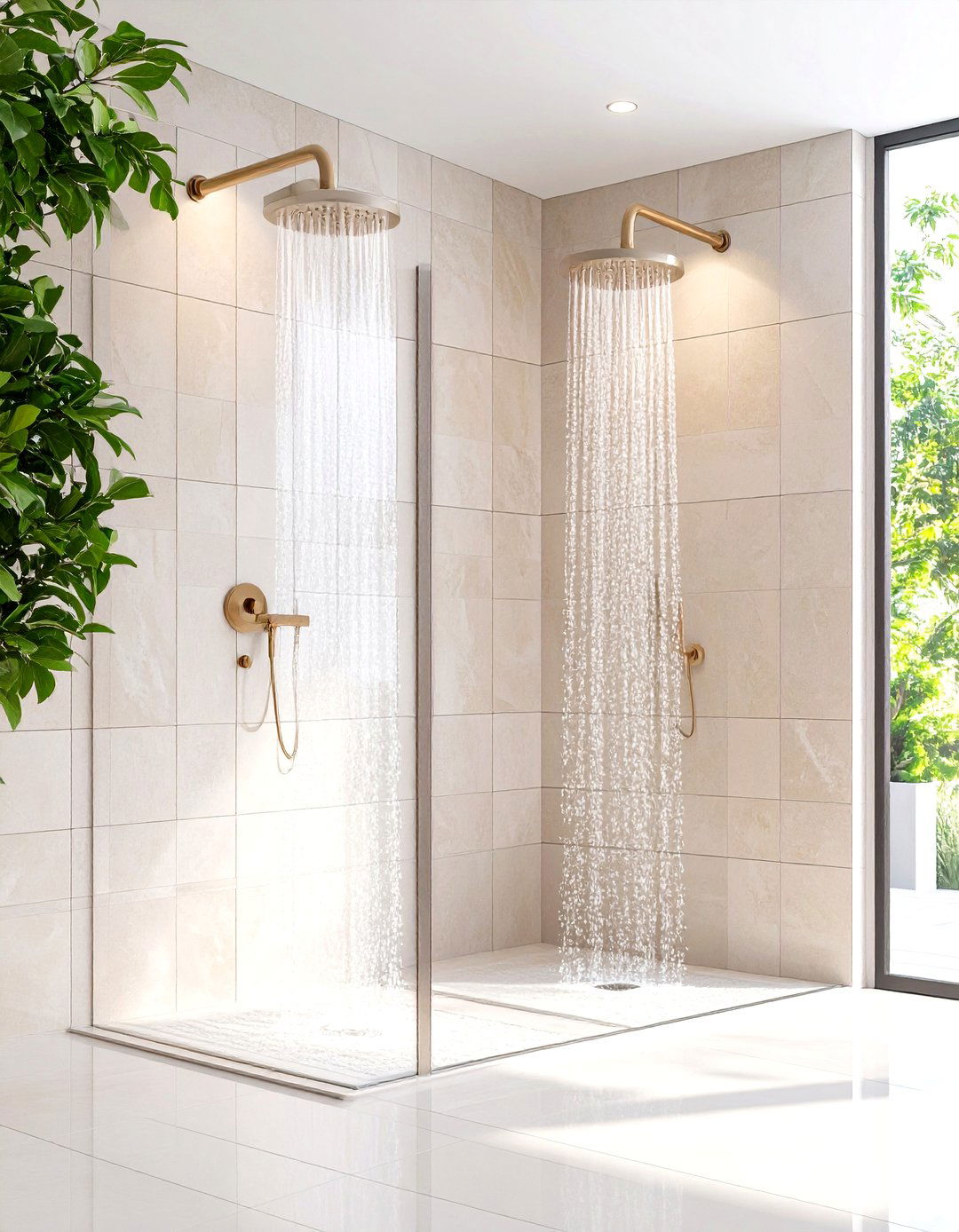



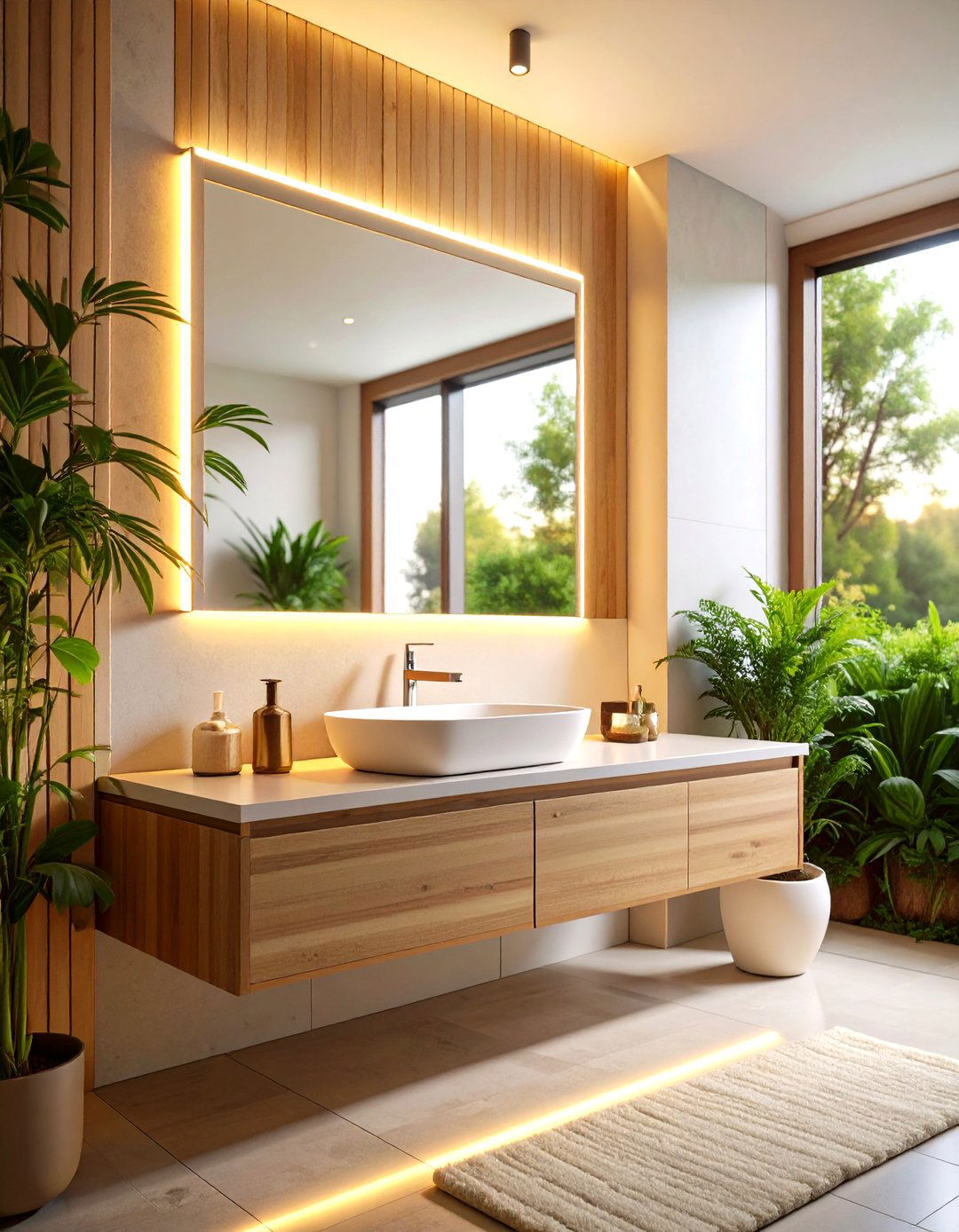

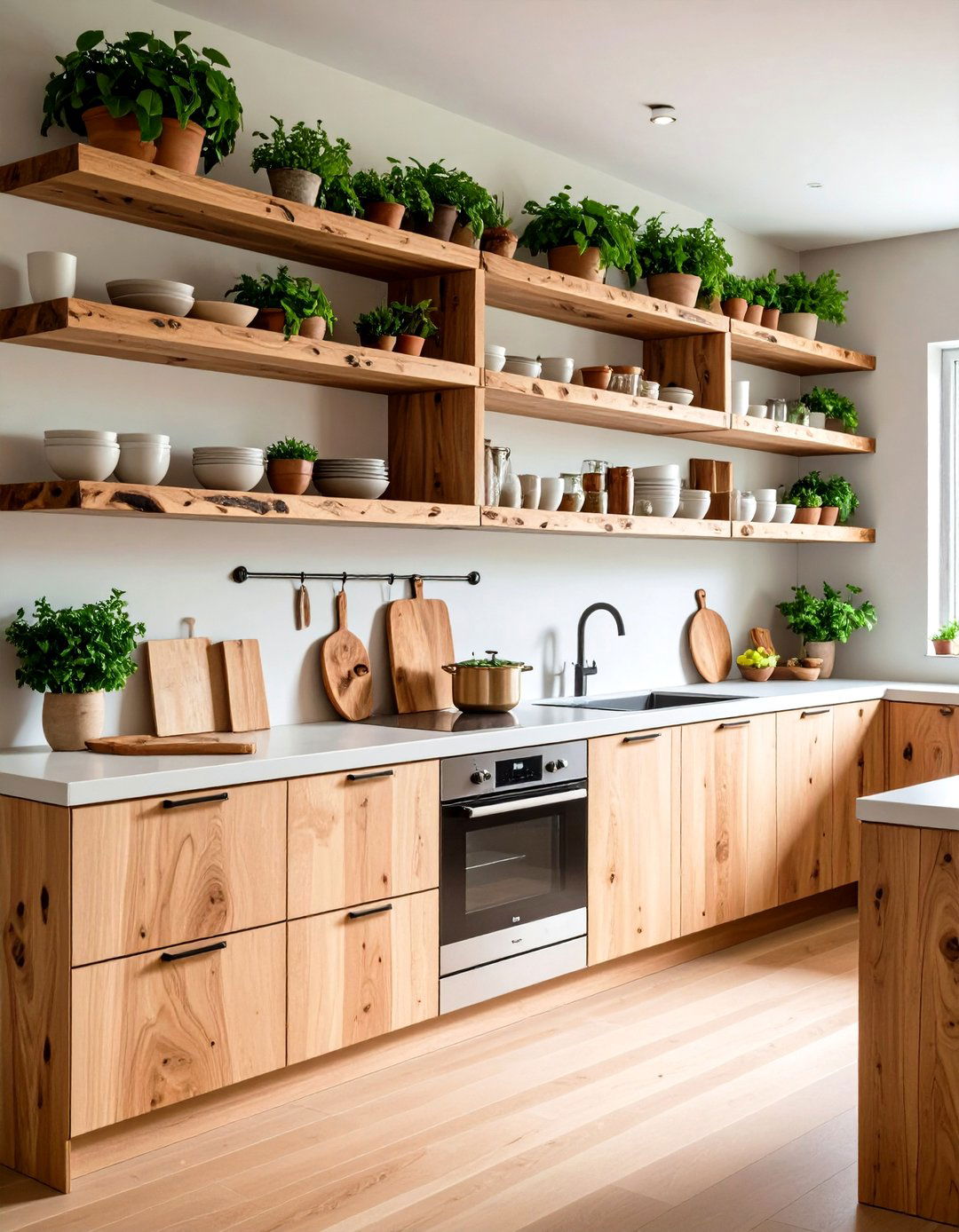
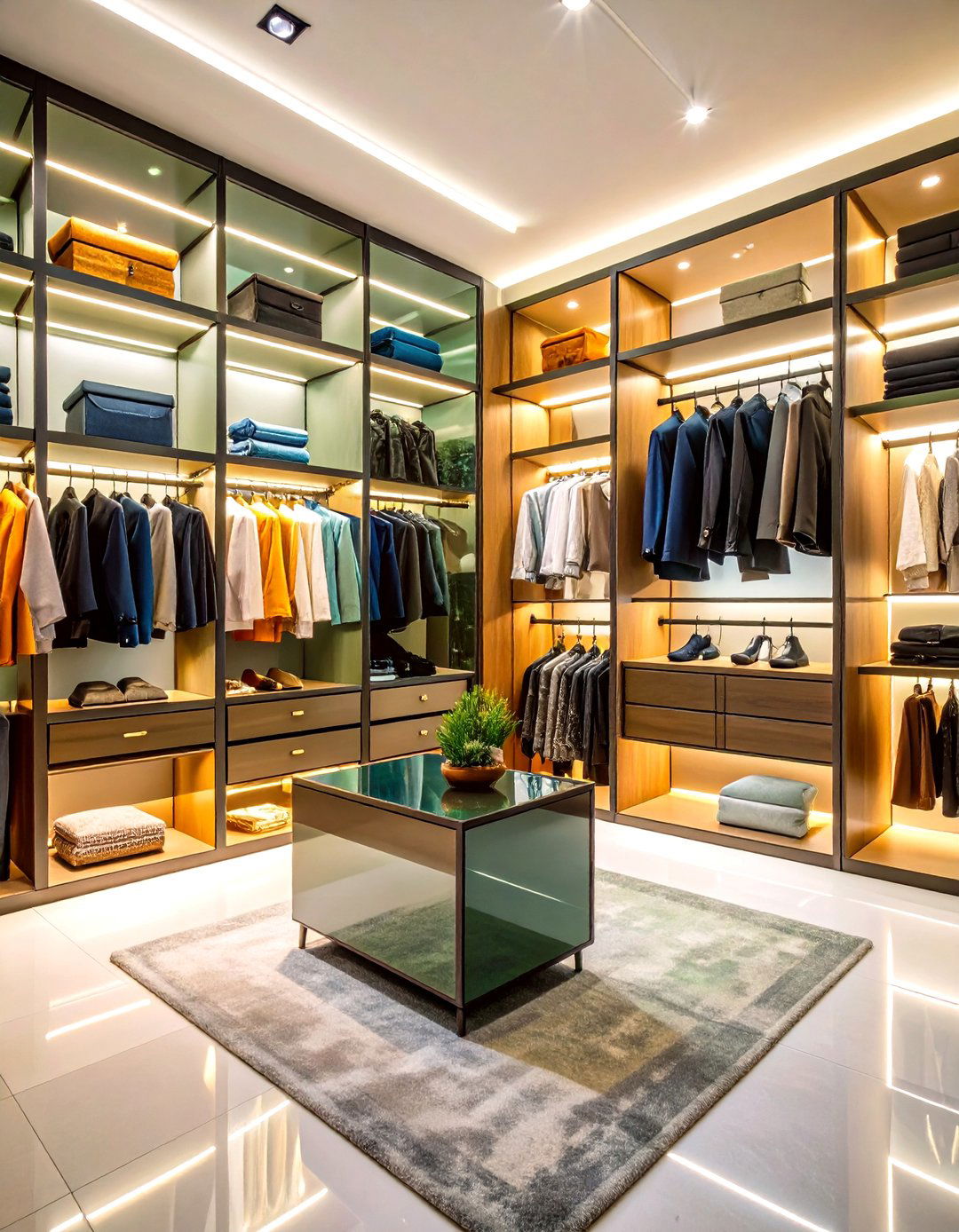
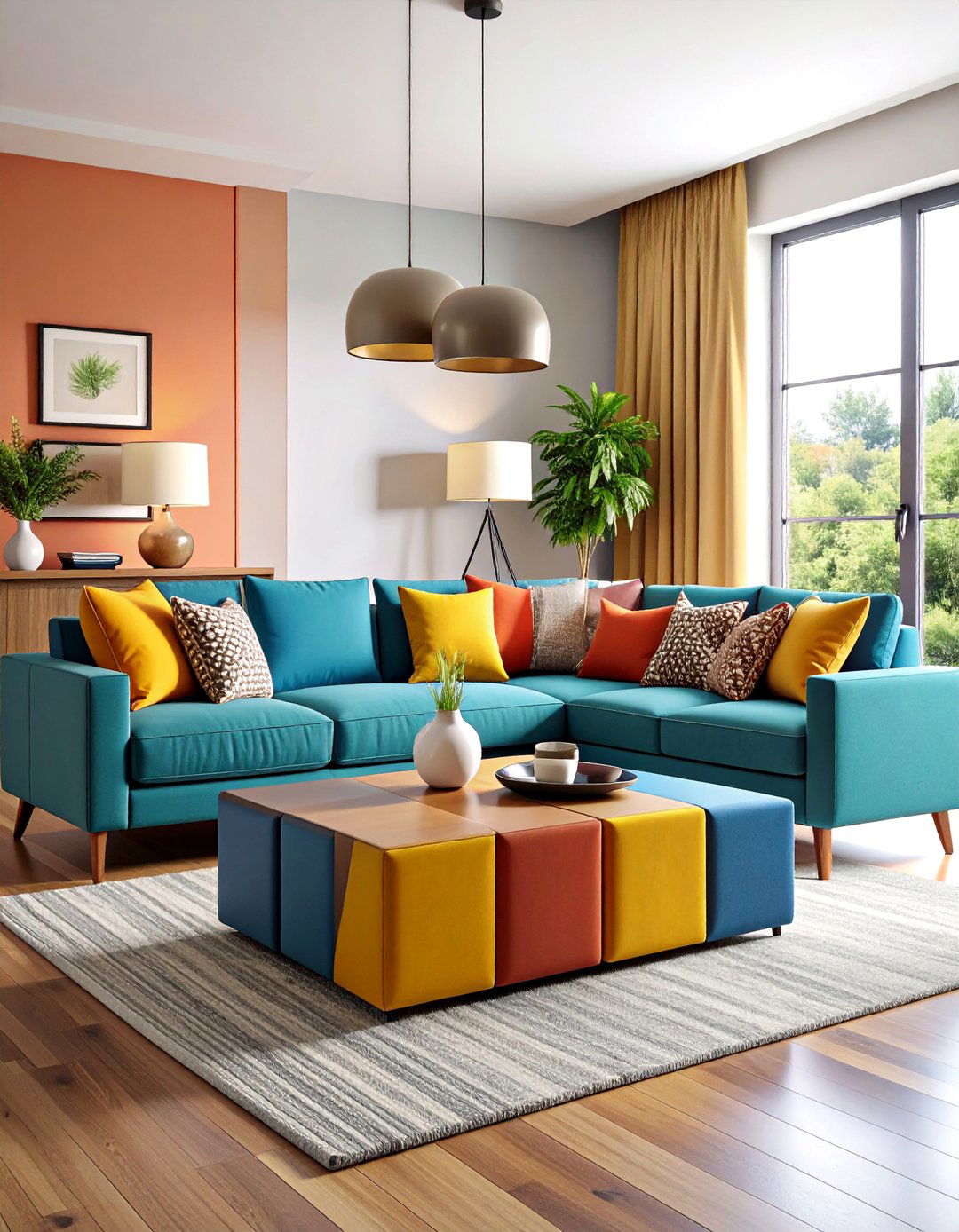
Leave a Reply